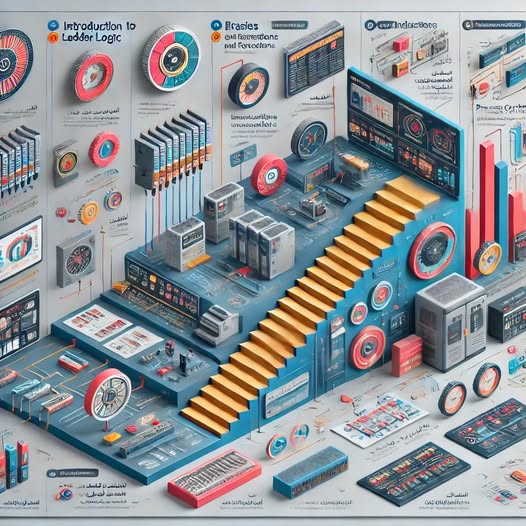
About Course
🔌 Ladder Logic
Code: 11005-PEM
General Information 🛠️
🏗 What is Ladder Logic?
Ladder Logic (LL) is a graphical programming language used for designing and implementing control systems in industrial automation. It is widely used in Programmable Logic Controllers (PLCs) for process control and machine automation.
Course Content
1️⃣ Introduction to Ladder Logic and PLC
• 🔹 What is Ladder Logic and why is it used in PLCs?
• 🔹 Differences between PLCs and traditional control systems
• 🔹 PLC components and how to connect to them
2️⃣ Basics of Ladder Logic Programming
• 🔹 Understanding Contacts, Coils, and Relays
• 🔹 Creating your first Ladder Diagrams
• 🔹 Logical operations (AND, OR, NOT)
3️⃣ Essential Instructions and Functions in Ladder Logic
• 🔹 Timers & Counters
• 🔹 Latching Circuits
• 🔹 Jump & Subroutine Functions
4️⃣ Process Control Using Ladder Logic
• 🔹 Applications in motor and valve control
• 🔹 Sequential Control
• 🔹 Implementing logical and mathematical operations
5️⃣ Error Handling and Performance Optimization
• 🔹 Detecting and troubleshooting errors
• 🔹 Optimizing program performance and avoiding common mistakes
• 🔹 Implementing advanced PLC programs
6️⃣ Practical Projects in Ladder Logic
• 🔹 Designing an automated factory operation system
• 🔹 Controlling production lines
• 🔹 Implementing a fully integrated PLC project
📜 History & Development
- Originally developed as a digital version of relay logic circuits.
- Standardized under IEC 61131-3 for PLC programming.
- Commonly used in industries such as manufacturing, robotics, and power plants.
⚙ Key Features
- Graphical Representation: Uses rungs similar to electrical relay circuits.
- Easy to Understand: Designed for engineers familiar with electrical schematics.
- Scalability: Can be expanded for complex automation tasks.
- Reliability: Ensures fast and consistent execution in real-time environments.
🔧 Basic Components
1️⃣ Contacts (Inputs) – Represent conditions (e.g., sensors, switches).
2️⃣ Coils (Outputs) – Activate actuators like motors or alarms.
3️⃣ Timers & Counters – Used for delay operations and event counting.
4️⃣ Logic Functions – Includes AND, OR, and NOT operations.
🏭 Applications
✔ Industrial automation (factories, conveyors, packaging machines).
✔ Robotics and motion control.
✔ Process control in power plants and chemical industries.
✔ Building management systems (HVAC, lighting control).
📊 Advantages
✅ User-Friendly – Easy for engineers to learn.
✅ Fast Execution – Optimized for real-time control.
✅ Wide Industry Adoption – Used across multiple sectors.
✅ Debugging Tools – Real-time monitoring and troubleshooting.
Student Ratings & Reviews



